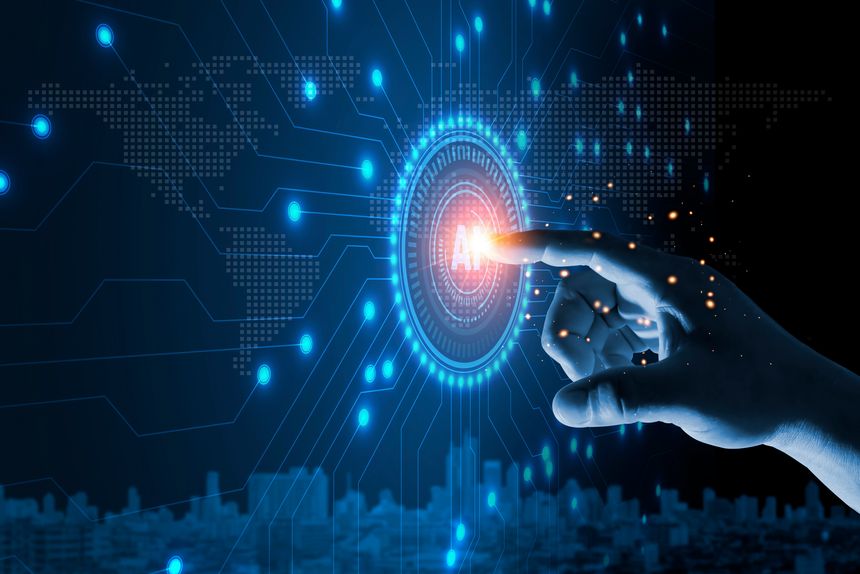The Artificial Intelligence Imaging Association (AIIA) has filed suit in the Western District of Texas alleging that MVision AI’s radiation oncology software infringes AIIA’s U.S. Patent No. 11,257,272. The asserted patent claims methods for generating synthetic image data to train machine learning models. Put more simply, think: constructing virtual scenes, placing 3D objects, applying textures, simulating camera parameters, rendering images, and feeding those images into training datasets.
What is “synthetic data”? - Synthetic data is information created by computers to look and behave like real‑world data, without collecting it from real people or devices. In medical imaging, that can mean generating realistic images with software or using AI to convert one type of scan into another to expand training datasets. Synthetic data is often used for training AI models when real data is scarce or sensitive, for testing software with data that covers edge cases or rare scenarios, or for protecting privacy by replacing real user data with synthetic versions that don’t expose personal information.
Common ways teams create and use synthetic data include:
Building virtual scenes with backgrounds, 3D objects, and simulated camera settings, then rendering images.
Using AI models to transform or augment existing data (e.g., “MR-to-CT” synthesis).
Tweaking images with effects (noise, blur, lighting) to mimic real capture conditions.
According to the complaint, AIIA contends that MVision’s software employs synthetic image generation techniques that correspond element‑by‑element to the patented workflow. The pleading highlights how MVision's own publicly available materials, detailing their synthetic CT generation from MR images, dataset augmentation, and simulated imaging parameters, are being used to map their processes to AIIA's patented workflow and demonstrates how granular technical disclosures can inadvertently provide a roadmap for patent owners to allege infringement.
The risk here is that your own detailed technical marketing, including blog posts, white papers, conference talks, and product pages, can be used against you in patent litigation. Routinely explaining data generation, augmentation, and training flows, especially in granular, claim-like language, makes it easier for patent owners to map those descriptions directly to their patent claims.
So what?
Treat the AI training pipeline like core product technology whenever possible. Inventory it, document it, and assess freedom to operate across each stage, from scene assembly and rendering to augmentation and dataset ingestion. Where synthetic data is central to performance, consider both patent clearance and design‑around opportunities at the level of specific training pipeline components, not just the end model.
Align all public disclosures, including technical blog posts, white papers, conference decks, user guides, software functional specifications, and any other product documentation, with your IP posture. These materials should be vetted for patent claim‑mapping risk. Prioritize describing capabilities and benefits at an outcome level rather than narrating stepwise technical methods when possible. Ensure any necessary technical detail is consistent with your IP strategy and clearance position, recognizing that granular technical specifications can serve as a roadmap for patent owners.
Synthetic data is not a legal 'safe zone.' The undeniable value from expanded datasets, better coverage of edge cases, and improved privacy posture can be easily offset if your methods for generating and using synthetic data become the subject of patent claims and enforcement, especially when detailed technical descriptions are publicly available.

/Passle/5db069e28cb62309f866c3ee/MediaLibrary/Images/2025-06-30-18-20-05-882-6862d555bf3898129ef17194.jpg)
/Passle/5db069e28cb62309f866c3ee/MediaLibrary/Images/5dcaad7f8cb6230d740f6e44/2020-09-09-10-34-00-350-5f58af9853548812f484795c.jpg)
/Passle/5db069e28cb62309f866c3ee/MediaLibrary/Images/2025-09-08-14-53-13-586-68beedd97356a10e44369bc6.jpg)
/Passle/5db069e28cb62309f866c3ee/MediaLibrary/Images/2025-11-10-19-05-26-989-69123776a319d5ea6f5c806e.jpg)
/Passle/5db069e28cb62309f866c3ee/SearchServiceImages/2025-11-17-06-06-19-600-691abb5b5011860d8fdcc894.jpg)